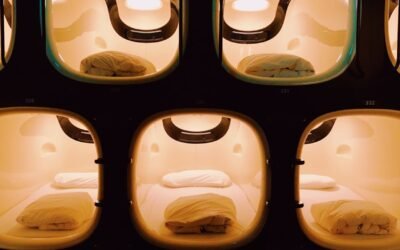Lighting temperature is a measurement of the color appearance of light emitted by a source, usually measured in Kelvin (K). Lighting temperature is important in determining the mood, atmosphere, and functionality of a space. In general, there are three main types of lighting temperature: warm white, cool white, and natural white.
Warm White Lighting Temperature (2700K – 3000K)
Warm white lighting temperature is often associated with coziness, intimacy, and relaxation. It emits a yellowish light that mimics the color of a traditional incandescent light bulb. This type of lighting is often used in living rooms, bedrooms, and dining rooms, where people tend to gather and socialize. Warm white lighting temperature is also used in restaurant settings to create a relaxing and comfortable ambiance for diners. It is not recommended for areas where a lot of reading or task work is done, as it may cause eye strain.
On stage, warm white lighting temperature can be used to create a cozy and intimate atmosphere. It is often used in theater productions to create a warm and inviting atmosphere during dramatic scenes. It can also be used to highlight the performer’s emotions and facial expressions.
Cool White Lighting Temperature (4000K – 4500K)
Cool white lighting temperature emits a bluish-white light that is often described as crisp, sharp, and clinical. This type of lighting is often used in commercial and industrial settings, such as hospitals, offices, and schools, as it is believed to promote focus, concentration, and productivity. It is also ideal for areas where detailed work is required, such as kitchens, workshops, and garages, as it enhances visibility and clarity.
On stage, cool white lighting temperature can be used to create a bright, crisp, and energizing atmosphere. It is often used in concerts and dance performances to create a dynamic and lively environment that enhances the energy and movement of the performers.
Natural White Lighting Temperature (5000K – 6500K)
Natural white lighting temperature is often referred to as daylight white, as it emits a neutral white light that mimics natural daylight. This type of lighting is often used in retail settings, art galleries, and museums, where accurate color rendering is critical. It is also used in areas where visual acuity and alertness are important, such as in hospitals, schools, and offices. Natural white lighting temperature is also becoming popular in residential settings, especially in areas where natural light is limited.
On stage, natural white lighting temperature is often used to provide accurate and true-to-life color rendering. This is especially important for theater productions, fashion shows, and other events where color accuracy is critical.
Understanding lighting temperature is important because it can significantly impact the mood and functionality of a space. Choosing the wrong lighting temperature can result in an uncomfortable, unproductive, or unpleasant environment.
For example, if a warm white lighting temperature is used in an office space where employees need to focus and be productive, it may result in a lethargic and relaxed atmosphere that is not conducive to work. Similarly, using a cool white lighting temperature in a living room may create a harsh and unwelcoming atmosphere, making it difficult to relax and unwind.
Ignoring lighting temperature can also lead to poor color rendering, which can be especially problematic in areas where color accuracy is important, such as art galleries, museums, and retail stores. Using the wrong lighting temperature can alter the perceived colors of objects, leading to inaccurate and misleading representations.
In conclusion, understanding lighting temperature is crucial in creating an appropriate and functional environment for any given space. Ignoring it can lead to a poor user experience, visual discomfort, and inaccurate color representation.







